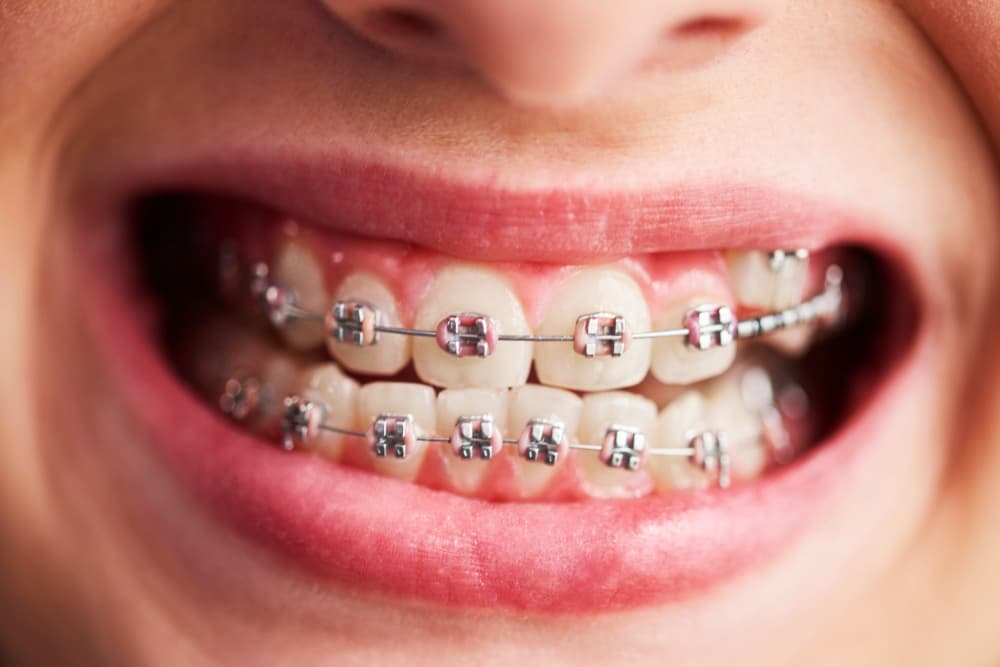Introduction
Gap Between Teeth, known as diastema, can impact both appearance and dental health. Diastema refers to the space between two teeth, often seen between the upper front teeth. While some people embrace these gaps as a unique smile feature, others may feel self-conscious and want to address them.
The desire for treatment often stems from aesthetic preferences and concerns about dental issues. Gaps can worsen problems like misalignment or gum disease. This blog will explore natural remedies for treating teeth gaps. It will assess their effectiveness and discuss whether closing gaps is possible without traditional braces or invasive procedures.
The Emotional and Psychological Impact of Teeth Gaps
The presence of gap between teeth can profoundly affect an individual’s self-esteem and emotional well-being. Many people with noticeable gaps feel self-conscious about their smiles, leading to reluctance in engaging socially, avoiding smiles in photos, or even shying away from conversations. Research has shown that a person’s smile plays a crucial role in first impressions and can impact both personal and professional relationships. Consequently, those with gaps between their teeth may experience feelings of embarrassment, anxiety, or lower self-confidence.
Addressing these emotional concerns can be as important as addressing the physical aspects of dental health. Understanding the psychological implications of dental aesthetics is vital, and individuals may find that seeking treatment for their teeth gaps not only improves their smile but also significantly boosts their overall confidence and quality of life.
The Role of Dental Health in Overall Well-Being
Maintaining optimal dental health is not merely a matter of aesthetics; it significantly impacts overall health. Research indicates that oral health is intricately linked to systemic health issues, including heart disease, diabetes, and respiratory infections. Gap between teeth can contribute to problems such as misalignment, which can lead to difficulties in chewing and increased wear on teeth.
Moreover, spaces between teeth can make it harder to maintain proper oral hygiene, as food particles and plaque may accumulate in these gaps, increasing the risk of cavities and gum disease. Recognizing the importance of dental health is paramount in understanding the broader implications of gap between teeth. Individuals must consider both the aesthetic and health-related consequences of untreated gaps when evaluating their options for teeth gap treatment.
Understanding the Different Types of Gaps Between Teeth

Before embarking on a journey to treat gaps between teeth, it is essential to understand the different types of gaps that exist, as this knowledge can guide the selection of appropriate treatment options.
Diastema: The Most Common Type of Gap
Diastema is the term used to describe a space between two teeth, often noticeable between the upper front teeth. Diastema can occur naturally and may be influenced by genetics, such as tooth size and jaw shape. While it is often seen as a cosmetic issue, it can cause functional challenges. For example, large gaps may make biting or chewing difficult.
Some individuals embrace their diastema as a unique smile feature, while others seek treatment to close it. This section explores the causes of diastema, such as thumb sucking in childhood, early loss of baby teeth, or periodontal disease affecting tooth positioning. Understanding diastema’s characteristics is key to determining suitable treatments for those looking to close gaps.
Spacing and Other Forms of Gaps
In addition to diastema, spacing is another common form of gap between teeth, often occurring when teeth are smaller than the available space in the mouth. Spacing may arise due to various reasons, including genetic factors, dental extraction, or improper alignment. Gaps can also result from tooth loss or misalignment, which may lead to uneven spacing across the dental arch. These types of gaps can significantly impact not only aesthetics but also the functional alignment of teeth, which can affect how well an individual can chew or speak.
This section will discuss the various causes of spacing and other forms of gaps, emphasizing the need to identify the specific type of gap before pursuing treatment options. By understanding the underlying factors contributing to teeth gaps, individuals can make informed decisions about their teeth gap treatment journey.
Natural Remedies for Closing Gaps: What Works?

Many individuals are interested in exploring natural remedies for closing gap between teeth. While results can vary, some methods may provide supportive benefits in the journey toward a more aligned smile.
Dietary Changes to Support Dental Health
One of the most effective natural remedies for promoting dental health and potentially addressing gaps between teeth is to make conscious dietary changes. A well-balanced diet rich in essential nutrients is vital for maintaining the health and strength of teeth and gums.
Foods high in calcium, such as dairy products, leafy greens, and almonds, are particularly beneficial as calcium helps in building and maintaining strong teeth. Additionally, foods rich in vitamin D, like fatty fish and fortified cereals, enhance calcium absorption, thus supporting dental health.
Incorporating crunchy fruits and vegetables, such as apples and carrots, can also aid in naturally cleaning teeth and stimulating the gums while providing essential vitamins. By focusing on nutrient-dense foods, individuals can create a supportive environment for their dental health, which may help in closing gaps over time, while also ensuring overall well-being.
The Benefits of Hydration and Oral Health
Staying well-hydrated is essential for promoting optimal oral health. Drinking plenty of water not only supports overall bodily functions but also plays a crucial role in maintaining oral hygiene. Saliva is a natural defense mechanism against decay, as it helps neutralize acids produced by bacteria in the mouth and washes away food particles. Hydration is crucial for saliva production, and insufficient saliva can lead to dry mouth, which increases the risk of cavities and gum disease—conditions that can exacerbate existing gaps between teeth.
This section emphasizes the importance of water intake and provides recommendations for maintaining proper hydration levels. By prioritizing hydration, individuals can foster a healthy oral environment that supports their dental health goals, including the potential to close gaps naturally.
Oral Hygiene Practices to Prevent Gaps from Worsening

Good oral hygiene practices are essential in preventing gaps between teeth from worsening and ensuring that existing gaps do not lead to more significant dental issues.
Effective Brushing and Flossing Techniques
Maintaining proper oral hygiene is critical for managing the health of teeth and gums, especially when dealing with gaps. Effective brushing involves using a soft-bristled toothbrush and fluoride toothpaste. Brush all surfaces of the teeth at least twice a day. Flossing is equally important.
It removes plaque and food particles from between teeth and in hard-to-reach areas. By incorporating these techniques into their routine, individuals can improve oral hygiene. This reduces the risk of plaque buildup and gum disease, which can worsen gaps between teeth.
Regular Dental Check-Ups for Proactive Care
Routine dental check-ups are an essential aspect of maintaining dental health and managing gap between teeth effectively. During these visits, the dentist provides personalized recommendations based on individual dental health.
This section highlights the importance of establishing a regular dental visit schedule and what to expect during appointments. By prioritizing check-ups, individuals can take a proactive approach to dental care, manage gaps, and support overall oral health.
Exercises and Techniques for Teeth Movement

While natural remedies and good oral hygiene are crucial, some individuals explore exercises and techniques aimed at encouraging the movement of teeth.
Manual Manipulation Techniques
Certain manual techniques may be employed to encourage gentle movement of teeth as a means of addressing gaps. These methods often involve applying gentle pressure to teeth, which some believe can stimulate their natural movement.
This section will discuss manual techniques, such as using dental wax or devices that apply light pressure to the teeth. These methods are generally safe. However, individuals should use them with caution to avoid causing harm or discomfort.
The effectiveness of such techniques is often debated, with varying opinions among dental professionals. Therefore, it is essential for individuals to consult with their dentist before attempting any manual manipulation to avoid potential complications.
The Role of Orthodontic Appliances
Orthodontic appliances, like retainers or clear aligners, offer a non-invasive way to address gaps between teeth. These appliances apply gentle pressure over time, encouraging gradual movement for better alignment. This section will explore different orthodontic appliances, their benefits, and their suitability for various gaps. Clear aligners, for example, are often preferred for their aesthetic appeal and convenience.
They are a popular choice for adults seeking a discreet treatment option. Individuals interested in orthodontic appliances should consult a dental professional to find the best option for their situation.
Limitations of Natural Treatments for Closing Gaps

While natural methods can be appealing, it is important to recognize their limitations in effectively closing gaps between teeth.
The Realistic Expectations of Natural Remedies
It is crucial for individuals seeking natural remedies for teeth gap treatment to set realistic expectations regarding the results. Many natural methods can support overall dental health. However, they often lack the effectiveness needed to make significant changes in teeth alignment or spacing.
This section will discuss the limitations of natural remedies. While these methods may promote dental health, they are unlikely to close larger gaps without professional intervention. Individuals should consider the size and nature of their gaps. They should also weigh the benefits of natural treatments against the chances of achieving desired results.
The Importance of Professional Consultation
For individuals with larger gaps between their teeth, seeking professional dental consultation is essential. A qualified dentist can assess the gaps and offer personalized recommendations. They will discuss suitable treatment options, such as orthodontics or cosmetic dentistry.
This section emphasizes the importance of understanding your dental health needs. It encourages individuals to consult a dentist for a comprehensive treatment plan. Professional intervention often provides more predictable results than natural methods alone. This ensures the best possible care for dental concerns.
Conclusion
Closing gaps between teeth naturally is an appealing concept for many individuals seeking to improve their smiles without invasive treatments. Various natural remedies and practices may promote oral health and help manage gaps. However, their effectiveness can vary depending on the individual. It is important to understand the limitations of natural treatments.
Equally important is maintaining good oral hygiene and following proper dietary practices. Additionally, consulting with dental professionals is vital for anyone with larger gaps or concerns about their dental health. A balanced approach is key. Combining natural remedies with professional guidance leads to the best outcomes. This helps individuals achieve the smiles they desire while prioritizing their dental well-being.


